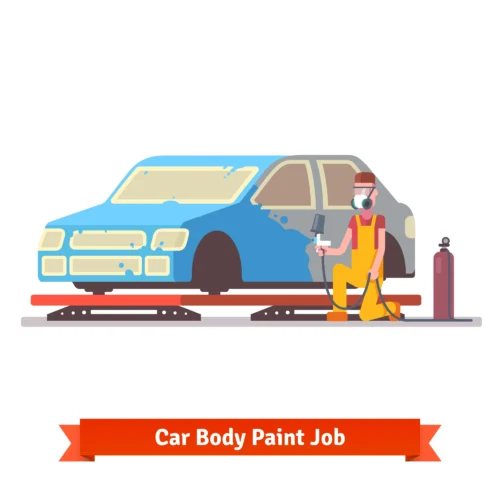EVs Demystified What You Might Not Expect
Brian Taylor August 23, 2025
Curious about electric vehicles and what really matters for new buyers? This in-depth guide explains EV charging, battery lifespan, total cost of ownership, and everyday driving realities. Discover practical tips and surprising insights before considering an electric car.
Charging Realities and Home Setup for Electric Vehicles
Understanding electric vehicle (EV) charging is one of the most important aspects before switching from gasoline to electric. While public charging infrastructure expands every year, most owners initially want to know if at-home charging will fit their lifestyle. Installing a Level 2 charging station at home enables overnight charging using higher voltage for faster results compared to standard outlets. Charging from a regular wall plug is possible, though much slower, often taking more than 24 hours to reach a full charge for some models. Many new homeowners are surprised to learn that some governments and utilities offer rebates or incentives to offset installation costs or upgrade electrical panels, potentially reducing out-of-pocket expenses for this eco-friendly adaptation (https://afdc.energy.gov/fuels/electricity_infrastructure.html).
Public charging networks, such as those from Electrify America and ChargePoint, offer different charging speeds to suit different needs. DC fast chargers provide much quicker top-ups than Level 2 stations, delivering an 80% charge in half an hour for most EVs. However, not every public location is equipped with these rapid chargers. Drivers may occasionally face wait times or slower speeds depending on site traffic and the chosen vehicle model’s capabilities. Realistically, most EV owners rely on a mix of home charging and opportunistic public sessions, optimizing convenience and cost-effectiveness for daily commutes.
Some prospective buyers hesitate at the idea of planning their drives around charging stations, but in practice, evolving charging maps and network apps are streamlining the process. Modern tools help travelers plot routes with precise charging locations based on their specific EV’s range and the available charger types. For apartment dwellers or those without private parking, innovations such as shared charging solutions and on-street chargers continue to appear in more cities. As this infrastructure grows, barriers to adoption for city residents are slowly lowering, making sustainable car ownership more accessible than ever before.
Battery Lifespan and Maintenance Expectations
Battery health is a top concern for many considering a switch to electric vehicles. Modern lithium-ion batteries are engineered for longevity, often matching or surpassing the vehicle’s usable lifespan. Most automakers provide warranties guaranteeing battery performance for eight to ten years or up to 100,000 miles, giving new buyers peace of mind regarding durability and expected replacement costs. A well-maintained battery can retain over 70% of its original capacity even after a decade, though minor reductions in range may gradually appear over years of heavy use (https://afdc.energy.gov/vehicles/electric_batteries.html).
Smart charging habits can help prolong battery life. Keeping the battery charge percentage between 20% and 80% for everyday use, rather than consistently topping off to 100%, is recommended by many experts. Extreme heat or cold can accelerate battery wear, but most vehicles come equipped with thermal management systems to protect internal components. Some models also allow owners to precondition the battery, warming or cooling it before departure to optimize efficiency and comfort.
For anyone worried about the future value of used EVs, advancements in battery management and recycling are promising. Several manufacturers partner with recycling organizations to repurpose or recycle spent batteries, turning old cells into new storage solutions or raw materials. Plus, as battery costs decline and recycling becomes more efficient, long-term total cost of ownership should become even more favorable compared to comparable gasoline-powered cars.
Understanding EV Range and Everyday Driving
Range anxiety, or the fear of running out of charge, is an often-cited concern for potential EV drivers. However, modern electric vehicles often feature ranges well over 200 miles per charge, with some reaching 300 miles or more on a single full battery. For the average commuter, who drives less than 40 miles per day, this means several days of driving between charges. Real-world factors such as highway driving, use of climate control, and cargo weight can reduce maximum range, though careful planning quickly becomes second nature for EV owners (https://www.energy.gov/eere/vehicles/articles/fotw-1173-october-3-2022-average-range-electric-vehicles-increased-291-miles-2021).
Drivers who regularly undertake long road trips may need to factor in planned charging stops. Fortunately, many navigation systems now allow easy integration with in-car route planners tailored to battery health and charger availability. Influences such as speed, outside temperature, and driving style remain more pronounced in EVs than traditional cars. Still, many owners report adapting quickly, similar to keeping an eye on fuel efficiency or gas station stops in older vehicles.
Owners and reviewers alike note that range indicators in new electric vehicles have improved in both accuracy and transparency. Apps can send notifications to charge or avoid running critically low. This connectivity, combined with vehicle data analytics, can help reduce surprises on the road. Over time, these features build confidence and reshape driving habits in a way that feels natural, even for first-time EV adopters.
Comparing Total Cost of Ownership and Incentives
A major benefit of electric vehicles comes from ongoing savings beyond fuel costs. EVs generally cost less to maintain due to simpler drivetrains with fewer moving parts, no oil changes, and less routine brake wear thanks to regenerative braking systems. While purchase prices for new EVs can be higher than gasoline models, many consumers find that tax incentives and rebates help narrow or even close the initial pricing gap. These may cover part of the sticker price, installation of charging infrastructure, or even utility bill reductions in certain areas (https://www.irs.gov/credits-deductions/electric-vehicle-home-charging-station-credit).
Electricity for charging tends to be more affordable and stable in price over time than gasoline. Some drivers even sign up for special EV utility rate plans that reduce the price of electricity during off-peak hours, lowering costs further. Factoring in the savings from reduced maintenance, lower energy costs, and available buyer incentives, the total cost of ownership for an EV often becomes competitive over several years with a traditional vehicle. Used EVs also provide affordable entry points, though specific battery certifications and remaining warranties should be considered during purchase research.
Insurance for electric vehicles can sometimes be slightly higher, depending on model and repair costs for unique components. However, as repair shops and the used parts market mature, these rates are beginning to stabilize. Comparison shopping and driving history—just like with any car—remain important tools for keeping insurance costs manageable. Ownership data shows the overall economic picture is improving in favor of EVs as more models enter the market and competition grows.
Environmental Impact and Future Trends
EV adoption is often motivated by concerns about air pollution and reducing greenhouse gas emissions. According to the U.S. Environmental Protection Agency, electric vehicles emit significantly fewer greenhouse gases over their lifetime compared to gasoline vehicles, especially when powered by renewable energy sources (https://www.epa.gov/greenvehicles/electric-vehicle-myths). The manufacturing of batteries and sourcing of raw materials do carry environmental costs, but companies are investing in more sustainable production methods and advancing recycling capabilities.
As technology improves, newer EV models offer greater efficiency, faster charging, and even better battery longevity. Governments worldwide are introducing stricter emissions standards, green incentives, and infrastructure programs, accelerating the shift to electric cars across all price points. Community-driven initiatives and nonprofit programs also promote inclusive access to EVs, ensuring benefits are distributed widely, not just among early adopters.
Looking forward, trends such as vehicle-to-grid integration, bidirectional charging, and solid-state battery technology all promise to expand the value provided by electric cars. Manufacturers are also developing more affordable EV options to fit a range of budgets and needs. Taken together, these changes point to a future where electric vehicles are increasingly the mainstream choice for personal mobility.
Everyday Use and Common Misconceptions
Despite rapid innovation, some myths about electric vehicles persist. It’s a common misconception that EVs are sluggish or less fun to drive. In reality, the instant torque of electric motors delivers surprisingly quick acceleration, making city traffic and highway merging both exciting and responsive. Many drivers enjoy the quiet ride and unique handling characteristics that differ from internal combustion engines.
Another widespread concern is the network of available repair shops. Early on, specialized maintenance was only available through dealerships or certified service centers. Today, as more mechanics gain training and automakers expand support, accessibility for routine repairs and diagnostics is increasing. Resources like online owner forums and official support apps make it easier to troubleshoot minor issues or understand scheduled maintenance needs for all drivers.
Gone are the days when EVs could only serve as short-range city cars. With a growing range of styles, from family SUVs to compact hatchbacks and luxury sedans, there’s now an electric vehicle to meet nearly every lifestyle. As infrastructure grows and technology evolves, more drivers are choosing EVs for daily commutes, errands, and even long-distance trips—transforming perceptions about what electric cars can truly accomplish.
References
1. U.S. Department of Energy. (2023). Electric Vehicle Infrastructure Deployment. Retrieved from https://afdc.energy.gov/fuels/electricity_infrastructure.html
2. U.S. Department of Energy. (2022). Electric Vehicle Batteries. Retrieved from https://afdc.energy.gov/vehicles/electric_batteries.html
3. U.S. Department of Energy. (2022). Average Range of Electric Vehicles. Retrieved from https://www.energy.gov/eere/vehicles/articles/fotw-1173-october-3-2022-average-range-electric-vehicles-increased-291-miles-2021
4. Internal Revenue Service. (2023). Electric Vehicle Home Charging Station Credit. Retrieved from https://www.irs.gov/credits-deductions/electric-vehicle-home-charging-station-credit
5. U.S. Environmental Protection Agency. (2024). Electric Vehicle Myths. Retrieved from https://www.epa.gov/greenvehicles/electric-vehicle-myths
6. Union of Concerned Scientists. (2023). Cleaner Cars from Cradle to Grave. Retrieved from https://www.ucsusa.org/resources/cleaner-cars-cradle-grave-2022










